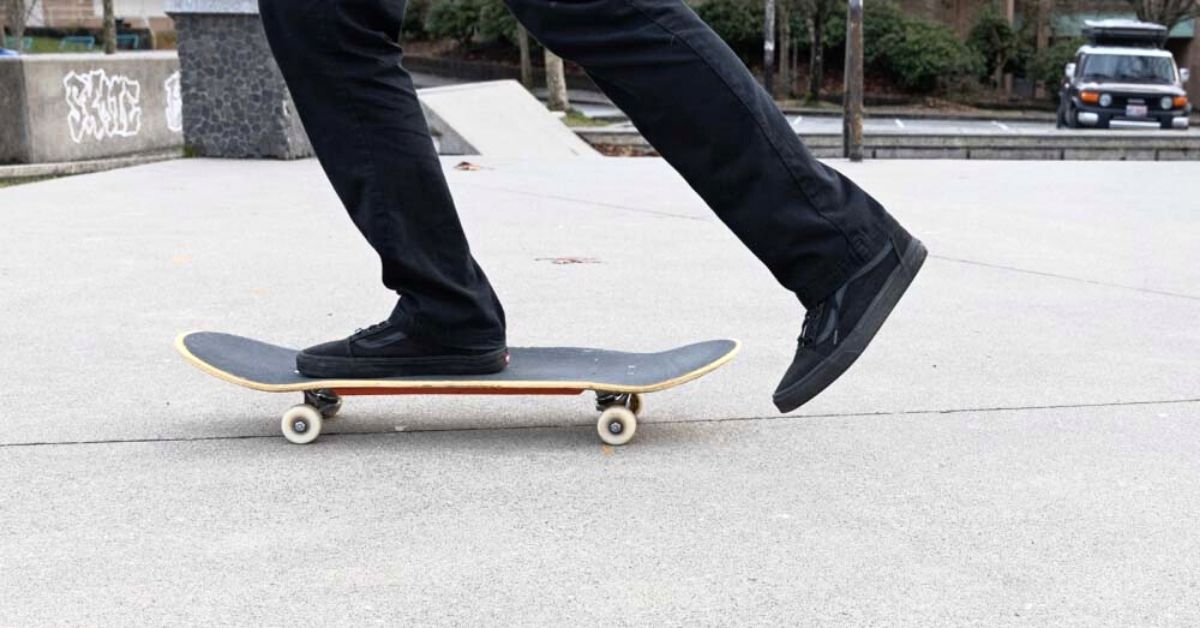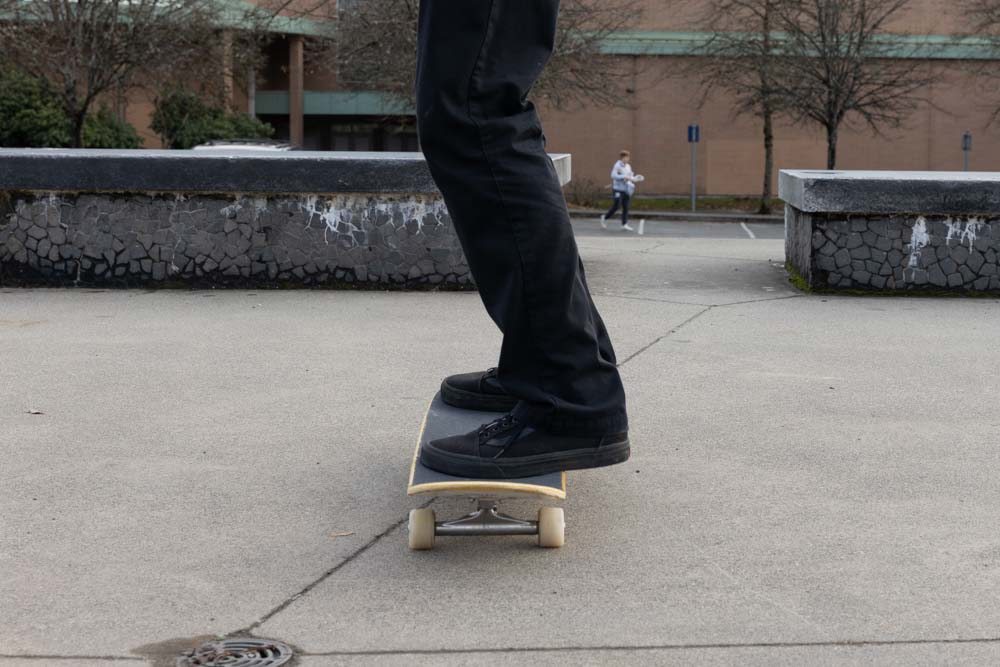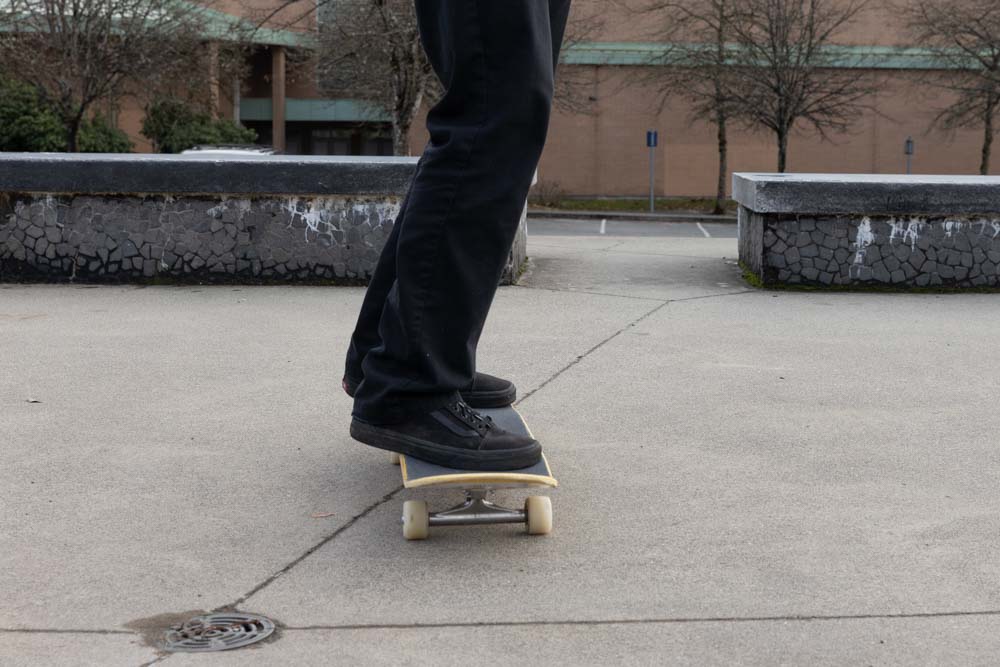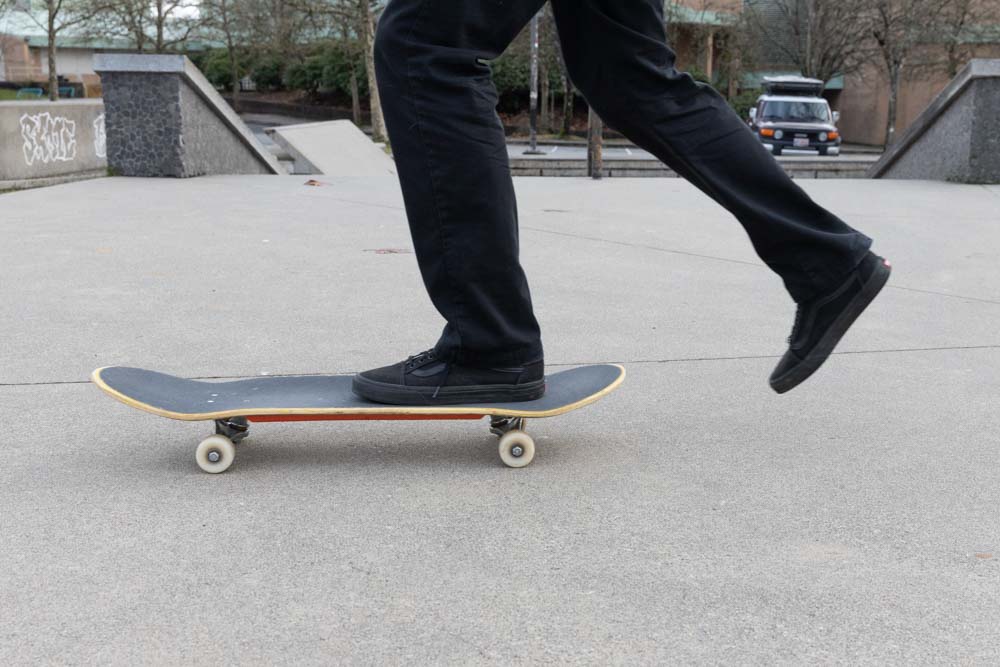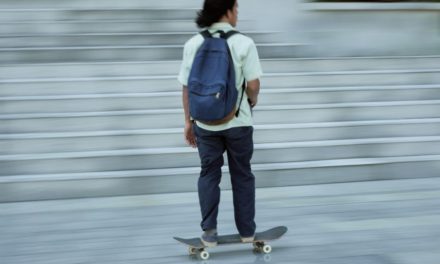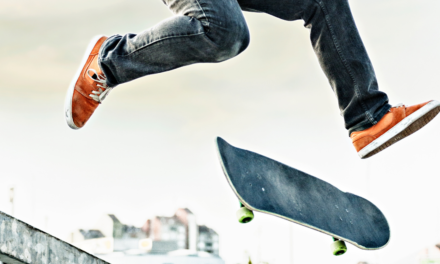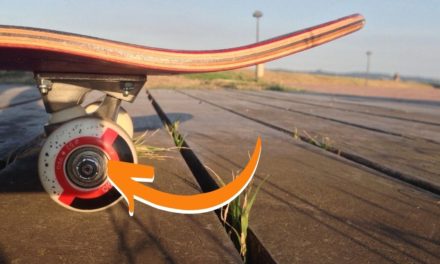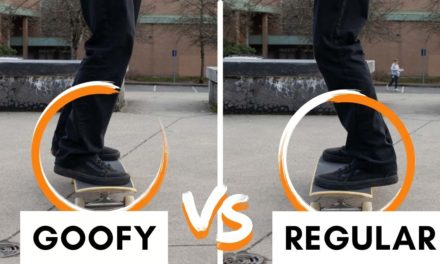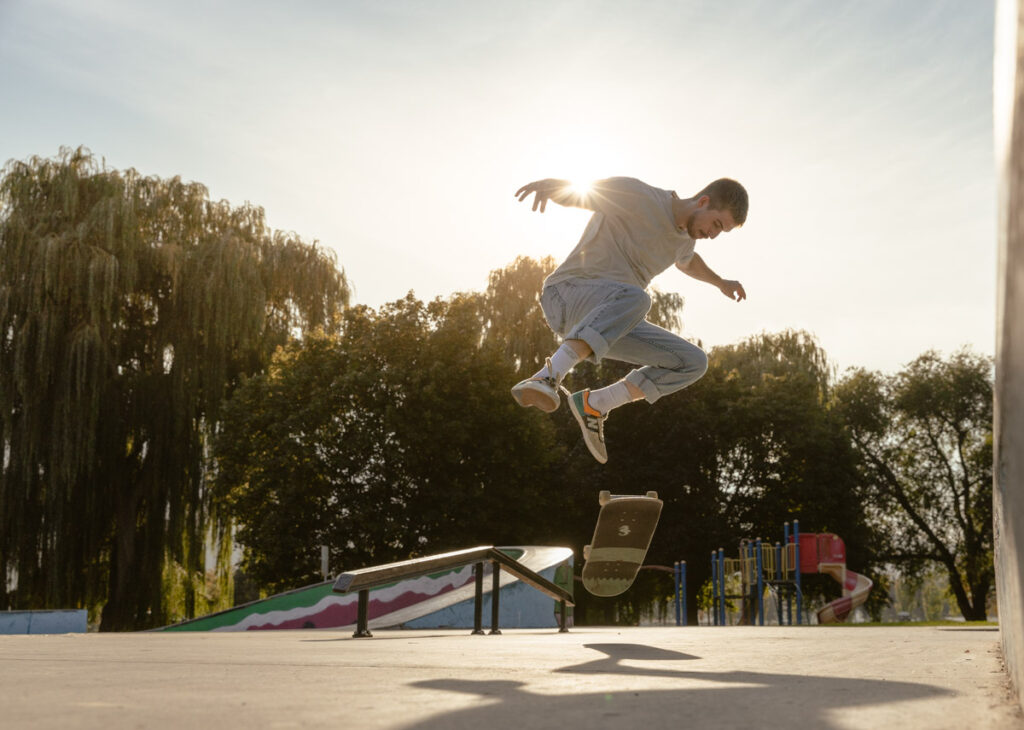Learning how to push on a skateboard is the ultimate barrier to entry into the sport. It’s the one thing you can’t do without if you want to start skating and feels incredibly awkward for just about anyone who’s getting started. I remember how awkward I felt first learning myself and how many folks in skate camps I taught struggled too. Luckily, with the correct technique, pushing on a skateboard is a lot easier than you might think.
To start pushing on a skateboard, follow these steps:
- Stand with both feet on one side of your board beside the rear wheels.
- Place your dominant foot over the front truck with your toes pointed forward.
- Weight and bend the front leg that’s on the skateboard.
- Bend the back leg that’s on the ground.
- Push off the ground with your back leg to propel yourself forward.
- Lift your back foot off the ground and place it on your skateboard.
- Position your feet to be shoulder width apart.
- Rotate your feet to sit horizantally across your skateboard.
- Ride away!
Although this covers the basics, let’s get into this process with a little more explanation in each step.
But before you can start learning how to push, you need to first figure out whether you have a goofy or regular stance.
Finding Your Stance On A Skateboard
There are two different ways you could stand on your skateboard. The first is with your right foot forward, known as “goofy,” and the second is your left forward, known as “regular.” The most comfortable stance makes absolutely no difference in how capable you are as a skater. It simply comes down to comfort.
Regular Goofy
Think of how some people prefer to kick a ball with their right foot while others prefer kicking with their left. Skateboard stance is the same sort of thing.
If you have surfed or gone snowboarding, you’ll likely have the same stance for skateboarding too. This makes the process a bit quicker to figure out which way you should stand.
Now, if you don’t have other activities to know your stance from, you can do a simple test by falling forward. Standing with both your feet together, lean forward until you have a natural reflex to catch yourself. Whatever foot steps forward to catch you will be the foot you place at the front of your skateboard. Since I am goofy (right foot forward), my right foot is what I ended up using to catch my fall.
If you overthink this too much, you can get mixed results. So if you don’t think your falling forward test was accurate, get a friend to gently push you from behind without giving you notice. Since it’s out of your control when you’re going to fall forward, your reaction will be more candid.
Once you know which foot has caught you, that will be known as your “front foot” from here on out.
How To Push On A Skateboard

Now that your stance is figured out let’s get pushing!
Step 1: Place Your Front Foot Over The Front Trucks
First, stand with both feet beside your skateboard near the back trucks. Make sure that your front foot is closest to your skateboard so you can easily step onto it. That means goofy stances will stand on the left side of their board, while regulars will stand on the right.
Lifting your front riding foot up and onto your skateboard, place it on or just below the front bolts. These bolts indicate the exact position of your trucks, so it’s easy to tell how your foot is positioned in relation. For example, I like to place my toes over the lower two bolts while pushing. However, covering all the bolts with your foot will make for a wider, more balanced stance later on.
The angle of your foot will ultimately come down to what’s most comfortable. Just aim for a front foot angle between 45° and 90° on your board.
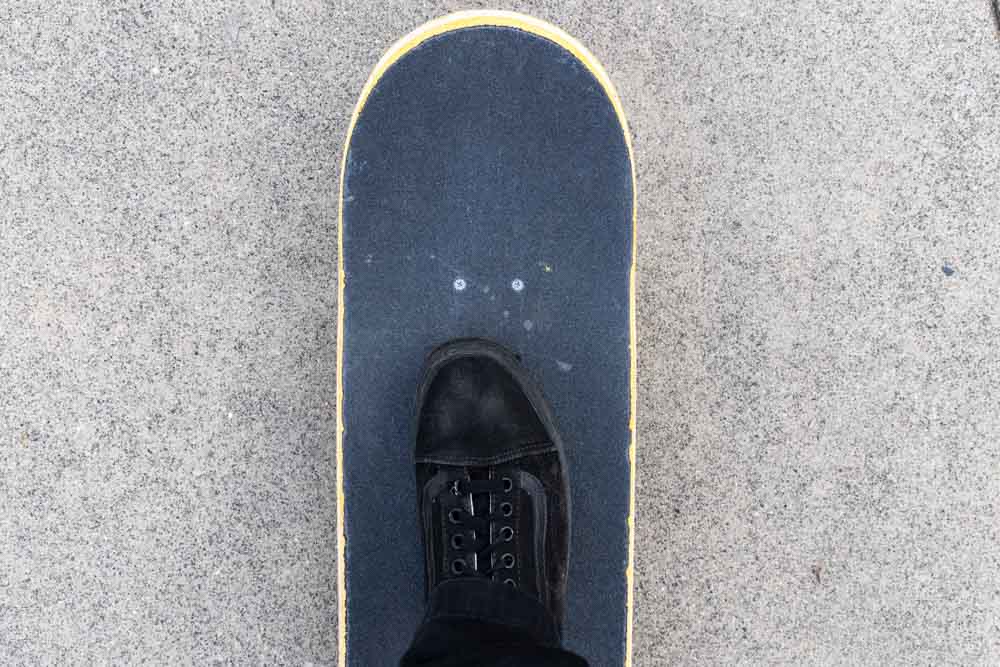
Step 2: Bend & Weight The Front Leg
With your front foot in position on your skateboard, add some weight to it and bend your knee to catch your balance. By adding weight here, you can get a feel for your board and be better balanced once you push off.
Step 3: Bend The Back Leg & Push The Ground Away
Once you feel balanced weighting your front foot, slightly bend the back knee and push the ground away to propel yourself forward. The easiest way to think of this is like sliding a rug along the ground with your foot. Rather than pushing up, you’re pushing at the same plane as the ground. If there were an imaginary rug under your foot, it would slide away behind you.
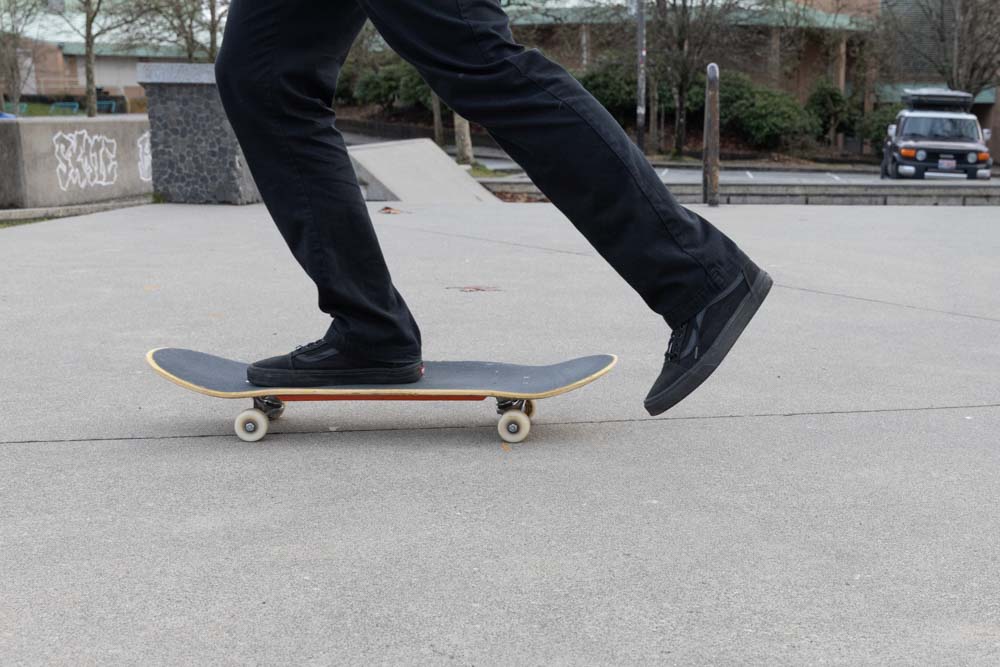
To start, try doing small pushes that don’t get you moving too quickly. Better yet, smaller pushes are easier to balance with since your back foot is closer to the ground at all times.
Try doing a few small pushes to move in the direction you want to travel. As you get more confident, you can make each push larger.
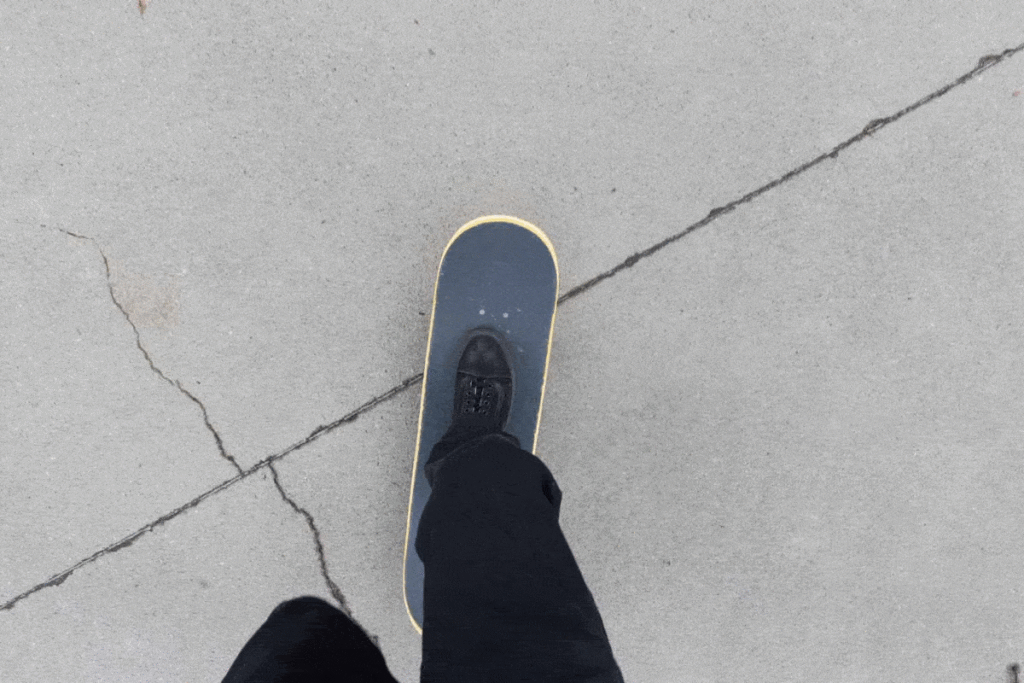
Step 4: Place Your Pushing Foot On The Skateboard
Once you have some momentum and your board is rolling at a comfortable speed, lift your back foot and place it on the tail of your skateboard. Rather than putting your back foot at the same angle as your front, position it horizontally across the tail. This will make it a lot easier to balance and deal with any side-to-side movements of your skateboard.
After your back foot is planted and you feel balanced, turn your front foot to match the same horizontal position as your back foot.
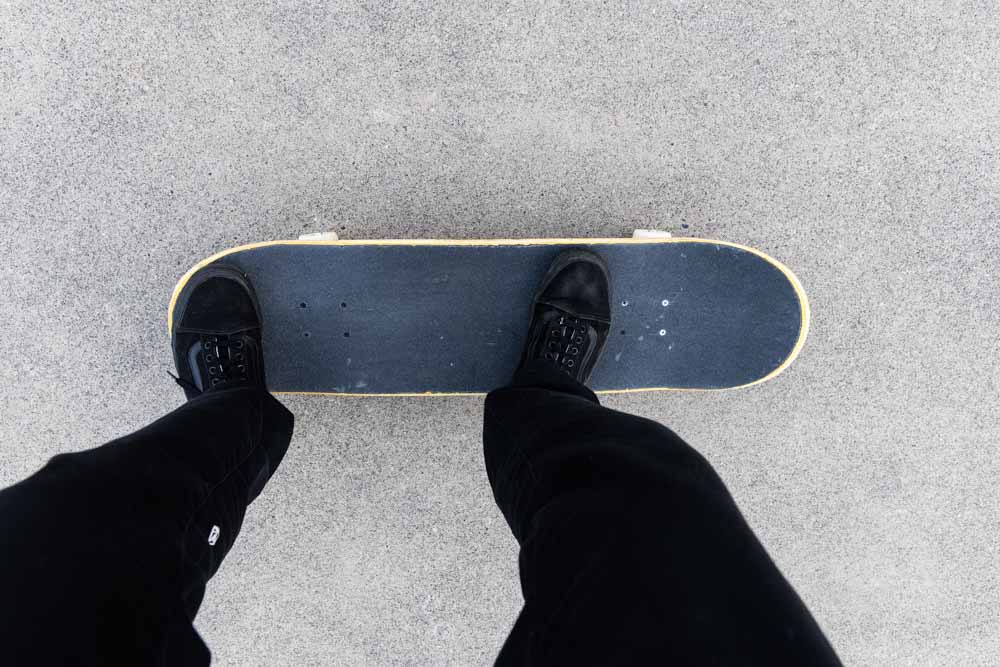
Step 5: Repeat The Process
After a certain distance, your skateboard will start to slow down. That means it’s time to start pushing again!
Rotating your front foot, so it’s pointing forward once again, take your back foot off the skateboard, and repeat the same movement as before. Pretending you’re pushing an imaginary rug along the ground, continue pushing to build up your speed.
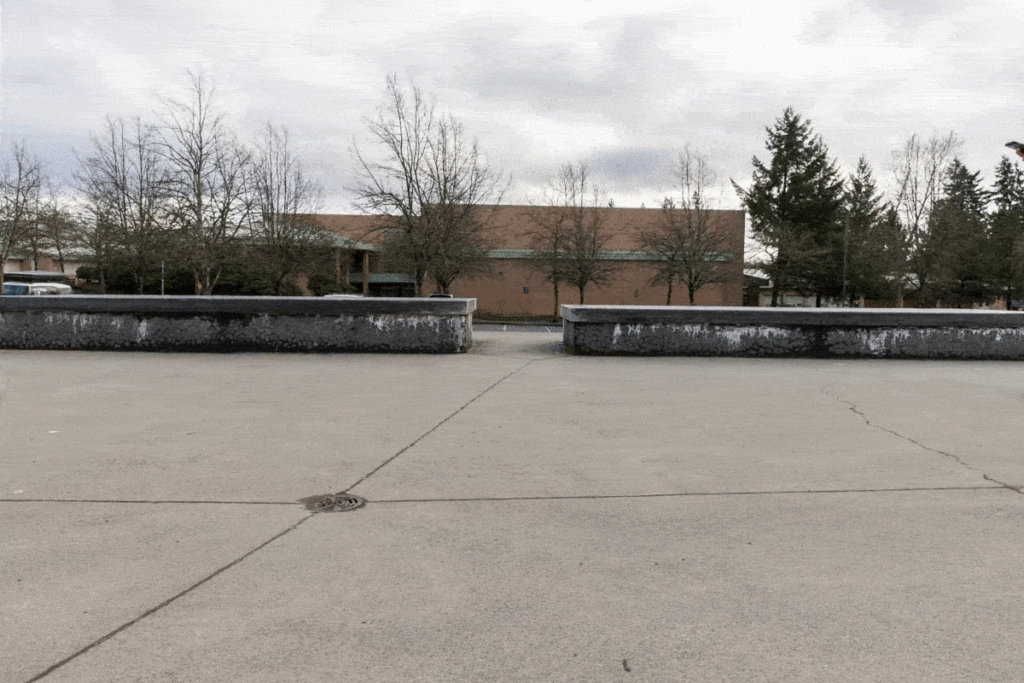
How To Turn Your Skateboard While You Push
A common problem for many skaters is the board turning on its own while trying to push. The reason for this is simply due to the positioning of your front foot.
Since your skateboard will turn when you lean side to side, having more weight on one side or the other while you push will result in you going in that direction. To go perfectly straight, you need to position your front foot in the middle of your board rather than off to one side. While you push, pay attention to how your ankle is rotating and adjust it accordingly to correct turning issues.
An easier way to keep an eye on it is to look at how your knee is positioned. Since the angle of your knee reflects the angle of the ankle, you can tell if you’re accidentally weighting a certain side. For example, if your knee is slightly inwards, you will end up turning in that direction. However, by placing your knee directly over your ankle, you will end up going straight.
How To Stop Your Skateboard If You Go Too Fast
Especially if you end up pushing down a small hill or put a little too much force into it, you’ll reach a speed you might not be comfortable with. That’s where knowing how to slow down safely becomes super important.
The easiest way to slow down a skateboard is to drag your back foot (pushing foot) along the ground. By dragging the sole of your shoe flat against the ground, the friction will gradually slow you down. The huge advantage of this method is that it’s easier to balance compared to other stopping methods, making it ideal for beginners.
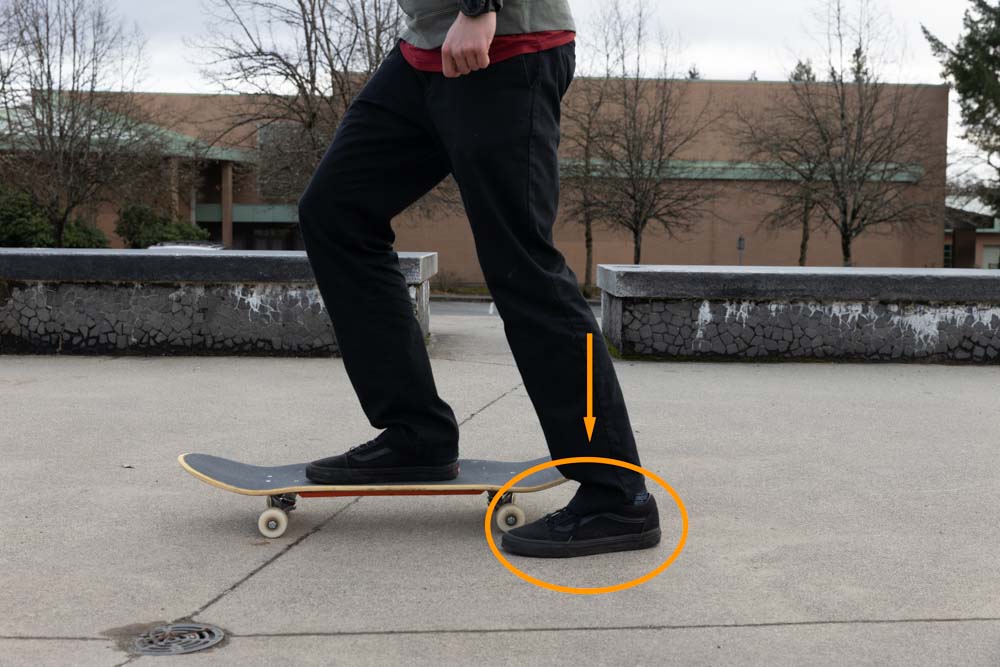
Now, if all else fails, the second-best method to stopping your skateboard is simply jumping off. Bailing out is always better than crashing, and running out of a trick is generally pretty safe at low to medium speeds.
I explain the foot drag method and a handful of other ways to stop a skateboard here.
Can You Push With Your Front Foot?
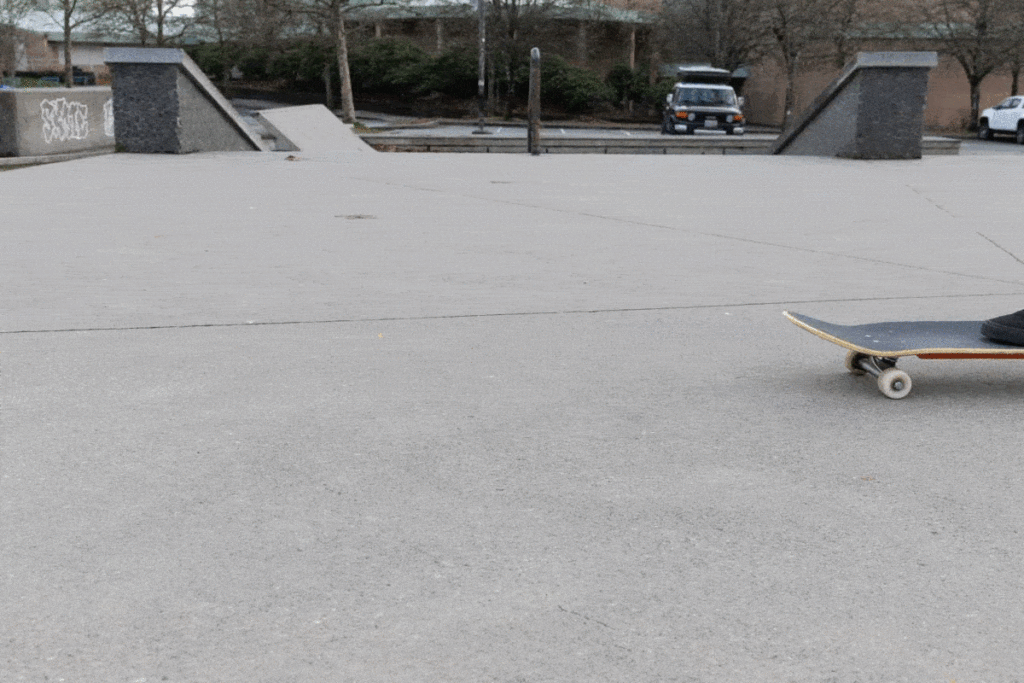
Throughout this post, I only mentioned how to push with your back foot according to your stance. However, after getting on your skateboard and rolling around, you might feel more comfortable pushing with your front foot instead. This style of pushing is known as “Mongo” and is a habit you want to break as soon as you can.
Mongo pushing isn’t ideal because it’s less efficient for setting up for tricks and is less stable when pushing. As you progress in your skating, pushing mongo will prove to be a hindrance more than anything.
If it feels a bit awkward pushing with your back foot when you’re used to mongo, it’s to be expected. Just know that it will start to feel more natural after a bit of time and practice.
Mongo Push Regular Push
How Long Does It Take To Learn How To Push A Skateboard?
The timeline for learning all this depends on what previous board sport experience you have and how often you’re practicing. With daily practice, you will find yourself feeling confident pushing around in just a couple of days.
If you’re more of a casual skater who can only get out a couple of times a week, expect it to take 2-3 weeks instead.
As with learning anything in skateboarding, practice is the secret formula to speeding up the process. If you want to learn how to push in less time, spend more time pushing! It’s as simple as that.
Happy Shredding!
– Brendan 🙂

